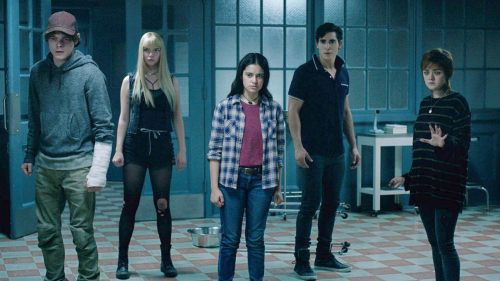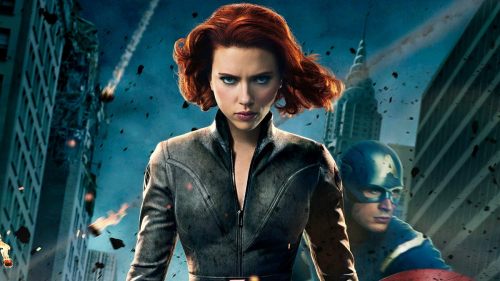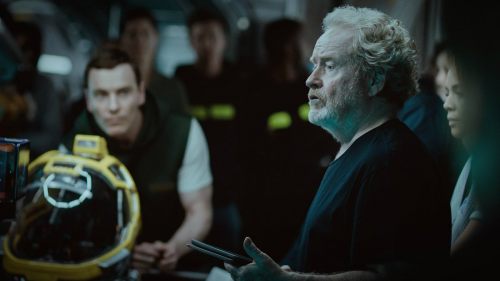CINDERELLA Review: No Surprises Here Except How Good It Is
Here’s how magic happens: you take the familiar and transform it into something extraordinary. The fabric of the thing remains the same, but a little bibbidi-bobbidi-boo, and it becomes something new and beautiful.
Kenneth Branagh made magic in his live-action adaptation of Disney’s Cinderella. In many ways, this is exactly the Cinderella you remember, no twists or turns required. From the fairy godmother all the way down to that chubby mouse, Gus, the story and all of its beats remain the same. But the script written by Chris Weitz – a very clever choice as screenwriter, as he’s an accomplished writer of young adult fiction and film – feels current through its humor, and through Ella herself.
It’s a very playful movie. Cate Blanchett is the wickedly funny stepmother, canny and cruel, and her two daughters, played by Downton Abbey’s Sophie McShera and The Borgias’ Holliday Grainger, bring most of the laughs through their mean-spirited vapidity and general cluelessness. Helena Bonham Carter is quite wonderful as the hairy dogmother – I mean fairy godmother – a flitty, fashion-obsessed thing who doesn’t have much success in building carriages but is “rather good at shoes.” And Ella’s dearest friends, her sweet little mice companions, are as charming and personable as they were sixty-five years ago.
It’s gorgeous, too. Branagh embraces scale and depth and color – especially color! – in every shot. The film is grand and vibrant, lush to look at. Every frame is a timeless picture book page, and with a strong script and assured direction, how could the film fail?
But of course it falls to Ella to carry Cinderella, and Lily James does that with ease. The Cinderella of 1950 didn’t have much to recommend her other than beauty and a sweet temperament, and with a character so deeply good, it would be easy to play her as flat as a doormat. Ella’s mother (Agent Carter’s Hayley Atwell in a brief but memorable turn) tells her, on her deathbed, that she must be courageous and kind above all else. “Kindness has power and magic in it,” she tells her, and James certainly radiates kindness, but it’s Ella’s courage that interests me more. She is fearless and principled, and when she allows her wicked step-family the run of her house as she moves into the attic, it doesn’t feel like meek concession so much as a stance. “I’ll be very comfortable up here,” she tells the mice. “No one will bother me.”
“Have courage and be kind” – is there any better advice for kids, for any of us? Have compassion but be strong. Be fearless but never trample the weak. In most respects, Ella is a typical Disney princess, but when the film ends she is a queen – and we know enough about her character to know that she will be a fair and wise leader, one who will rule alongside her husband with grace and strength.
Disney still has a lot to answer for when it comes to princess movies. Since 1937, with Snow White and the Seven Dwarfs, little girls across the world have wanted nothing so much as to be beautiful, well-dressed and to nab a wealthy prince. It took until 1989’s The Little Mermaid for a Disney princess to show any independence or even personality. Two years later, Belle did more rescuing than being rescued, cementing a trend toward princesses with as much bite as beauty – a trend that crests with Frozen, a movie that turns most of Disney’s established values inside out with a wink. While it works in Cinderella’s favor that Branagh didn’t attempt the radical modernization that sank Maleficent (in quality if not in box office returns), his traditional approach risks a backward point of view when it comes to gender politics and the correlation of beautiful to good and ugly to bad. But Cinderella’s stepmother and sisters, though over-styled, are ugly only in their hearts, and the most beautiful thing about the very beautiful Ella is her spirit.
Still, there’s a conventionalism here in her pursuit of Prince Charming (well, Prince Kit, played by Game of Thrones’ Richard Madden in a role very similar to that of Robb Stark) that would feel stale if not for the performances of the two stars. James and Madden play Ella and Kit as adults who meet, learn a little about one another and want to spend more time together. Kit loves Ella’s audacity and honesty; she loves his liveliness and good humor. Sure, they still get engaged in a matter of days and after the confirmation of a slipper’s fit, but their happy ending is rooted in Ella’s bravery by showing her true self, nothing more than a dusty servant girl, and in Kit’s loving acceptance of her just as she is. And that goes both ways, as Kit confesses to fearing the future, and refers to himself as a monarch apprentice, still learning his way, an admission that seems to warm Ella's heart.
When we’re first introduced to Ella, Bonham Carter’s narrator tells us that she is a person who “saw the world not only as it was, but as it perhaps could be.” Kenneth Branagh didn’t only see Cinderella as it was – a studio cash-grab – but as what it could be: something as simple and as significant as a good movie. Kids are lucky to have Cinderella, and I’ve no doubt they’ll love it, but we’re lucky to have it, too. Any film that values kindness, courage and forgiveness over all else – and certainly one that’s beautiful and fun, to boot – is as rare as that surprisingly comfortable glass slipper.



